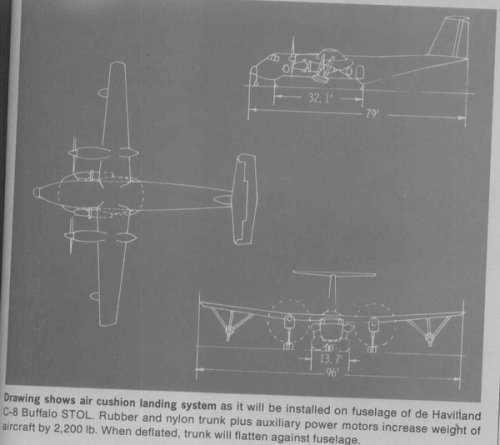Jemiba said:
I moved this subject to this section, which is more appropriate, I think, as such
ideas may have been more around during the post war years, too, when the fear of an
immobilized airforce, due to destroyed runways was increasing.
But I don't know, if building such "wet runways" would have been necessary, as in many
countries you can find a lot of rivers and channels. Or did you think of attempts, to built
take-off and landing sites for commercial seaplanes in otherwise "waterless" regions ?
Well, so a flying boat like a Boeing Clipper or a Shorts Sandringham could have brought
passengers directly into a valley in the Alps.
Yes, it is a hard topic to classify isn't it?
I was actually thinking of three possibilities:
- Expanding the reach of commercial flying boats for direct flights. Such runways would have provided an ability for relatively large craft with long take-off roles to service inland locations.
- Making cheap temporary runways which cost less to maintain. Modifying existing rivers/lakes or building overflow areas from small rivers that could flood several fields might be attractive in remote areas.
- Finally, avoiding cratering of runways (which would be difficult as a disposable pontoon/hydrofoil would be required for each aircraft - but probably cheaper than the proposed hovercraft solution). Of course such a design would be vulnerable to 5 kg aquatic area-denial mines...
donnage99 said:
A few years ago I experienced a weather condition in georgia, us, where heavy rain followed by freezing. In the morning, everything turned to ice. At that time, no cars are to be found in the street. The reason is that the streets are extremely slippery due to the layers of ice above them. I suspect the same problem would occur on an ice runway?
This is not to mention that the friction creating by breaking wheels would melt the smooth layer of ice and making it uneven for safe operations?
Definitely. Ice tends to produce unpredictable and slippery conditions. You are right to mention the liquefying of the upper layer under pressure (pressure can do this even without much friction) in addition to conditions where rain falls on top of the ice etc. I'm a Canadian and there is always a one and a half week period in the early winter where a certain percentage of the more inexperienced drivers fly off the roads. Its important to watch out for other drivers during this period. We lose the occasional bus as well.
For this reason landings are carried out on packed snow runways using skis (where the snow can crumple under pressure and the skis can provide high surface area). Of course, our major airports use expensively maintained and regularly cleared runways.
Sometimes pilots aren't always so lucky. I recall Olga Lisikova had one of her most frightening experiences landing on ice (she was also hunted by a Bf-109 while in a U-2 bi-plane and had to fly an Li-2 under desperate near zero visibility conditions to try and resupply her husband's tank unit).
The incident is near the end of this excellent interview:
http://lend-lease.airforce.ru/english/articles/lisikova/index.htm

